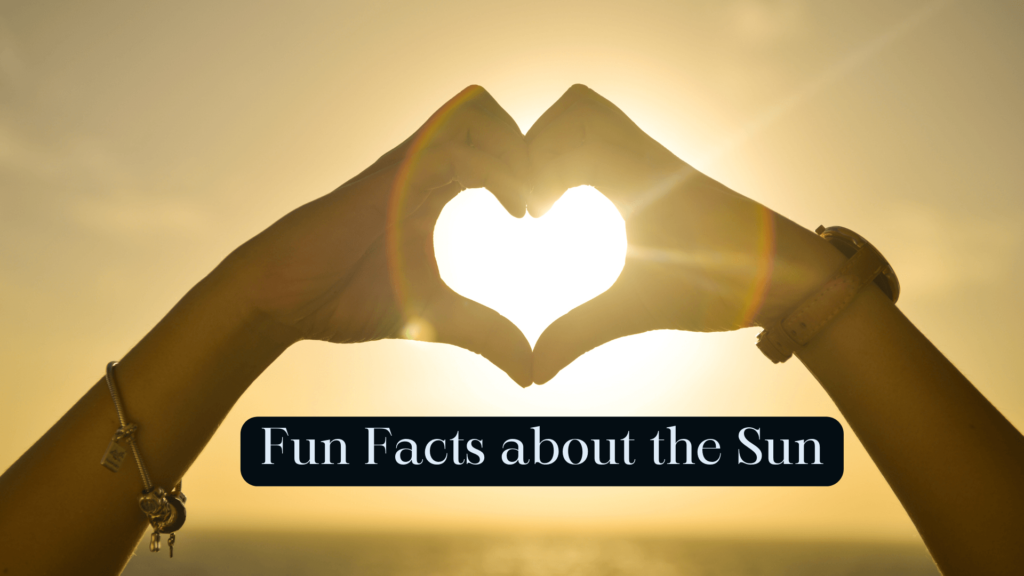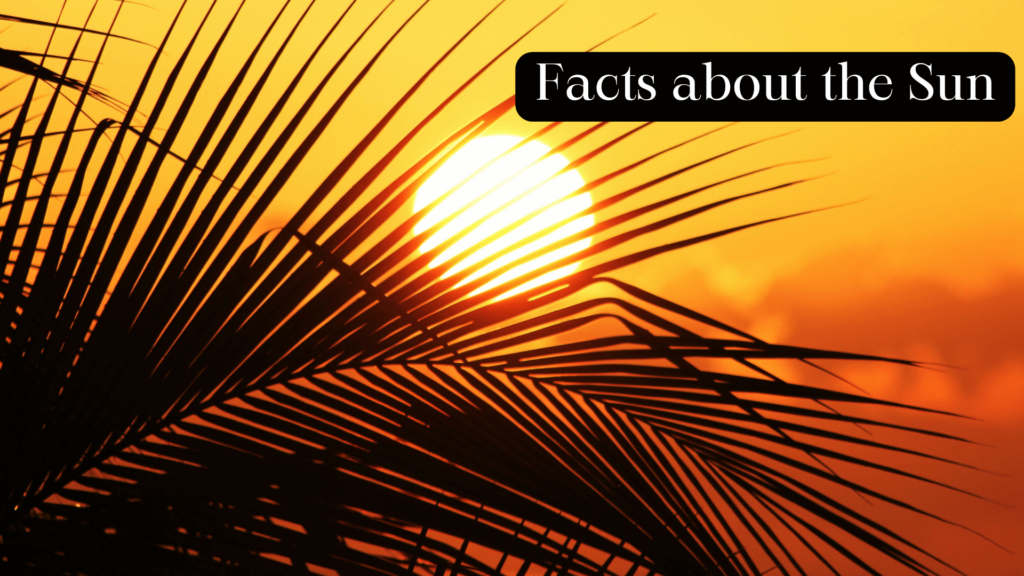Our Location
Islamabad, Pakistan

Are you trying to find some fun facts about the sun, for your kids’ science classes so they can learn about the solar system? We’re adding this fascinating trivia to the list of amazing things we can thank the sun for, like warm days, blossoming flowers, our weather patterns, the water cycle, and much more.
At the core of our solar system lies our Sun, a yellow dwarf star that has been around for 4.5 billion years. It is a bright, luminous orb made of hydrogen and helium.
The sole star in our solar system, it is located around 150 million kilometers, or 93 million miles, from Earth. Life on Earth as we know it would not be possible without the energy of the Sun.
| Equator circumference | 4,379,000km |
| Radius | 695,700km |
| Star type | Yellow dwarf |
| Temperature | 5,973°C to 15,000,000°C |
| Average orbital speed around the Milky Way | 720,000km/h (200km/s) |
| The average time is taken to rotate on an axis | 27 Earth days |
| Number of planets | 8 |
The sun is a common star, one of around 100 billion in the Milky Way galaxy. The sun has a huge impact on our world because it controls the seasons, climate, weather patterns, ocean currents, and photosynthesis, which allows plants to survive.
Indeed. The Sun rotates because plasma flows across its surface, despite not being as solid as Earth. The Sun rotates once on its axis every 27 Earth days on average, while various portions of the Sun move at varying speeds. The polar areas revolve over thirty days, whereas the equatorial regions rotate in just twenty-four.

Do you believe that you are an expert on the Sun? Rethink your thoughts. Following are the facts about the sun While some may be completely new to you, others you may already be familiar with.


Situated far out on the inner rim of the Milky Way’s Orion Arm, the sun is rather alone. Proxima Centauri, a red dwarf, is its closest star companion and is located at 4.24 light-years distant.
Carbon diamond that has crystallized from white dwarf stars. A white dwarf typically weighs ten billion trillion carats. According to Travis Metcalfe of the Harvard-Smithsonian Center for Astrophysics, our sun will transform into a diamond that lasts forever in around five billion years.
The next solar maximum, or solar max, is expected in 2013. During this time, astronomers predict an increase in solar flares, solar storms, coronal mass ejections, and auroras.
The average quantity of solar energy that reaches Earth’s atmosphere is known as the solar constant. Approximately 1.37 kilowatts of power per square meter is the solar constant.
The known cosmos contains an estimated 100 billion galaxies. The Milky Way is home to the Sun and eight of its planets, including Earth. One quintillion kilometers, or 100,000 light years, make up our galaxy.
The Sun is located in the Orion Spur, a spiral arm of the Milky Way. This diverges from the Sagittarius arm of the galaxy. At a speed of 720,000 kilometers per hour, the Sun and our solar system round the Milky Way’s center. One orbit takes 230 million years to complete.
It is more than 4.5 billion years old on Earth.
Numerous historical societies believed that the sun was a god.
It is 5,505 °C on the surface of the Sun.
All of the planets in our solar system revolve around our sun.
The light from the Sun reaches Earth in eight minutes.
Helium and hydrogen make up the Sun.
A section of the Universe’s Hall. Among the hundreds of billions of stars in the Milky Way Galaxy, our Sun is just one typical star. It serves as the foundation for our knowledge of all stars since it is the only one we can view in great detail. The majority of the gas in the Sun is made up of hydrogen and helium.
The Sun is the closest object to a perfect sphere that has been observed in nature, with just a 10 km variation between its polar and equatorial diameters, which is astounding given its enormous immensity.
Many people mistakenly believe that the Sun is red, orange, or yellow. But in reality, the Sun is only a mixture of hues that look white to our eyes. Photographs taken from orbit make this simple to notice. Color-separated light from the sun is what makes up rainbows.
Despite being composed of gas, the core has ten times the density of lead.
It is also the Sun’s hottest area, with temperatures of around 15 million °C (27 million °F).
The only location in our solar system with temperatures and densities high enough for nuclear fusion to happen spontaneously is the center of the Sun.
The Sun’s core, where temperatures may reach 27 million°F (15 million°C), is its hottest region. The photosphere, or the portion of the Sun that we refer to as its surface, is comparatively cold at 10,500°F (5,500°C).
Images are personally made from Canva and is downloaded from Unsplash